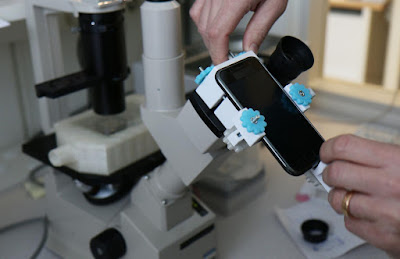February 13, 2019 - According to a report available on Radiant Insights, Inc.; the global live cell imaging market is projected to witness a healthy CAGR by 2022. High prevalence of cancer and growing government backing in cell-based research are anticipated to propel growth. Increasing use of high-content screening techniques in drug discovery can further boost market growth over the forecast period (2018 to 2022).
Browse full research report :
https://www.radiantinsights.com/research/live-cell-imaging-market-outlook-2022
Rising preference for kinetic research over fixed cellular analysis is considered as one of the major driving factors for market. Addition of dyes and reagents alter the cell behavior, generally in a negative manner and do not display the natural cellular functions. In drug discovery phase, understanding the cellular behavior in its natural state is crucial. The technique is used to study cellular integrity, enzyme activity, exocytosis and endocytosis protein trafficking, and localization of molecules. It is also used to monitor molecules in live animals. Increasing adoption in development of personalized medicine is expected to create growth opportunities over the forecast period.
However, factors such as high cost of high-content screening systems and lack of skilled professionals are expected to restrain growth of the market for live cell imaging over the forecast period.
The worldwide live cell imaging market can be segmented on the basis of product, application, technology, and region. Based on product, the market can be categorized into equipment, consumables, and software. As per application, the market can be divided into cell biology, stem cell biology, developmental biology, drug discovery, and others. On the basis of technology, the market can be split into Fluorescent Resonance Energy Transfer (FRET), High Content Analysis (HCA), Fluorescence In Situ Hybridization (FISH), and others.
Geographically, the market can be divided into North America, Europe, Asia Pacific, and Rest of the World (RoW). Europe and North America are the early adaptors of live cell imaging technology. Governments in these regions are making significant investments in research and development activities. North America is the major market due to the presence of technologically advanced infrastructure and rising investments.
In Europe, increasing demand for research regarding cardiac diseases, neurodegeneration, and cancers has lead to development of stem cell research and advanced microscopy. This factor is anticipated to propel regional growth over the forecast period. Increasing funding for R&D in cell and developmental biology from institutes like Wellcome Trust and Cancer Research U.K. are also supporting growth in this region. Asia Pacific is likely to showcase rapid CAGR due to high demand from India and China. Increasing scope of live cell imaging in drug discovery and personalized medicines is expected to further support regional market growth.
To get free request sample :
https://www.radiantinsights.com/research/live-cell-imaging-market-outlook-2022/request-sample
Key companies operating in the global live cell imaging market include Perkin Elmer, Inc.; GE Healthcare; Becton Dickenson & Co.; Nikon Instruments Inc.; and Danaher Corporation. The market is extremely competitive with major dominant companies focusing on new product launches, partnerships, and mergers and acquisition to sustain competition.
For instance, GE Healthcare recently launch DeltaVision Ultra microsystem. The system a high-resolution widefield deconvolution microscope designed for widefield fluorescence imaging and analysis of cellular and subcellular processes, up to 50 μm beyond the coverslip and down to 250nm in size. It contains ergonomically designed environmental chamber united with gas control, which supports live cell imaging analysis under physiological conditions and complex non-physiological conditions like hypoxia.

No comments:
Post a Comment